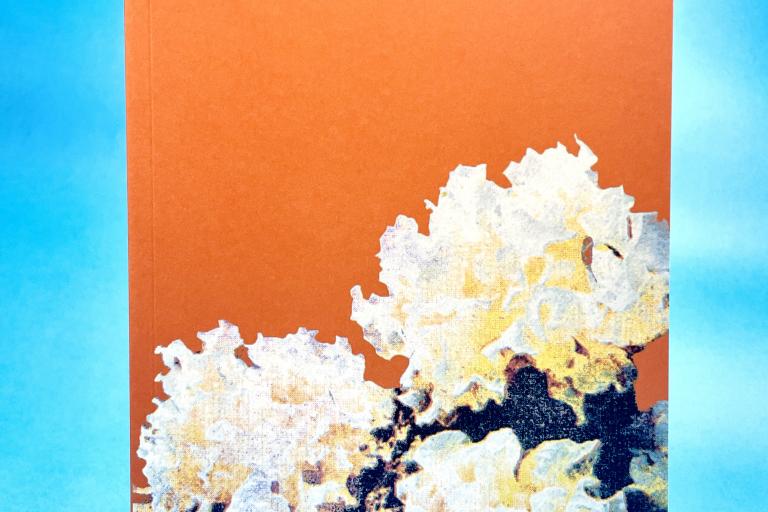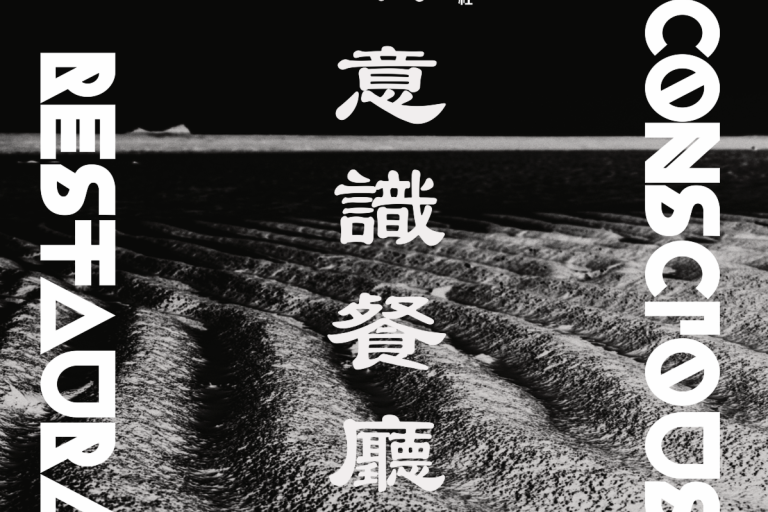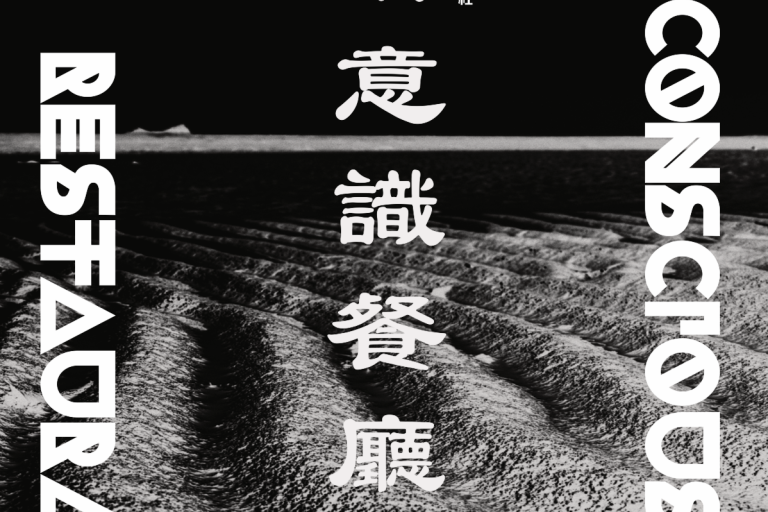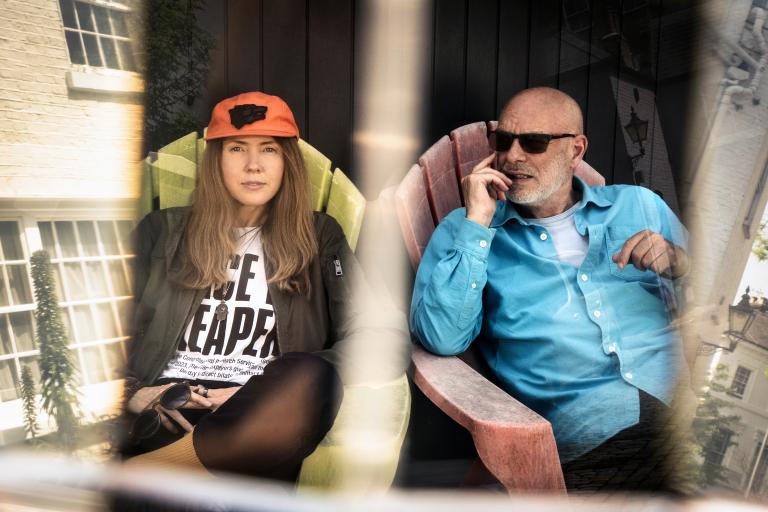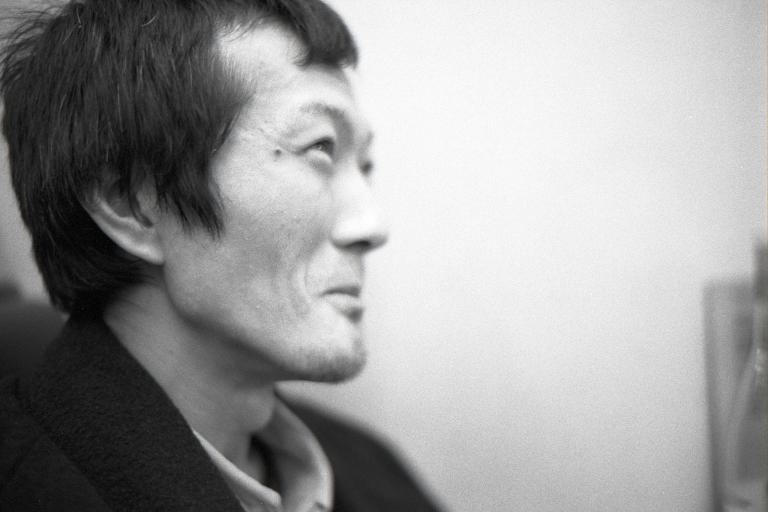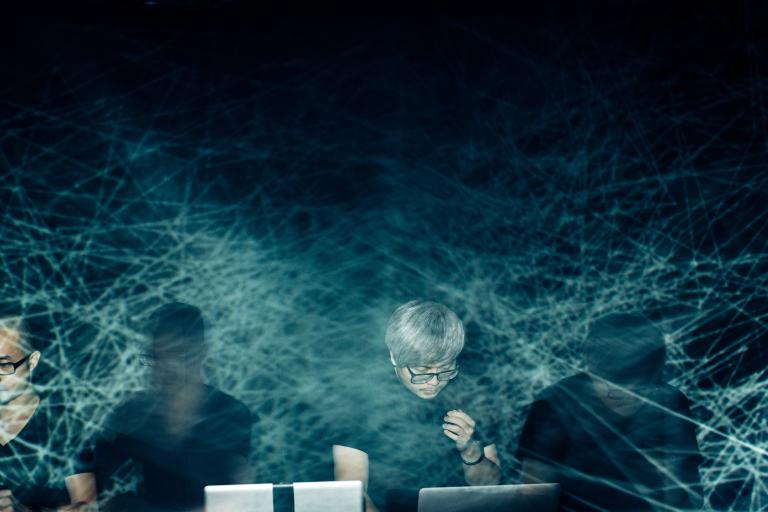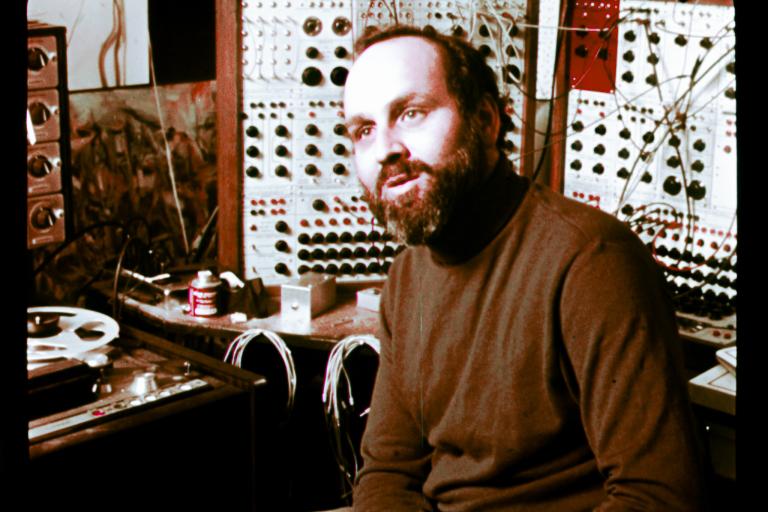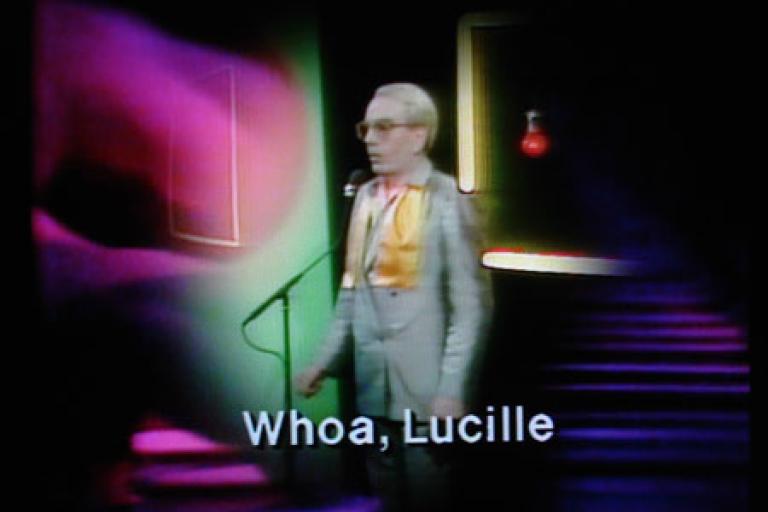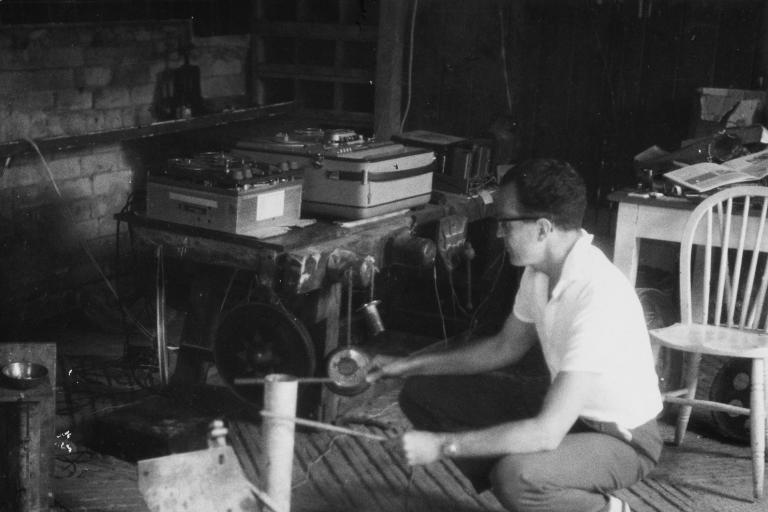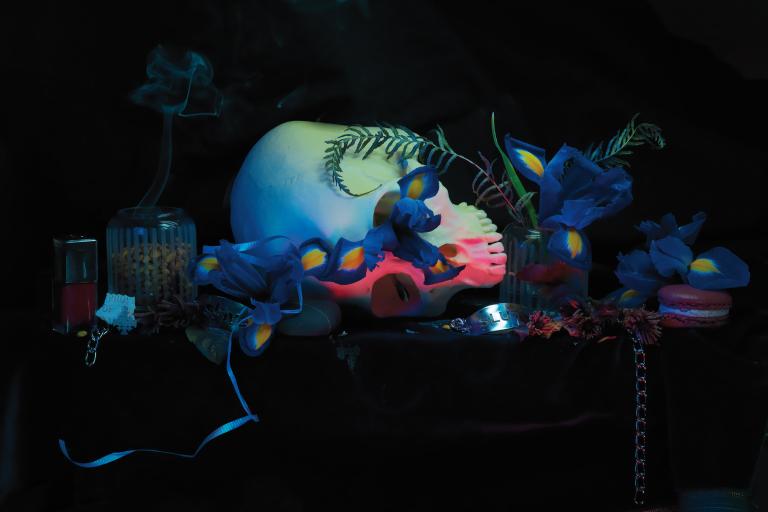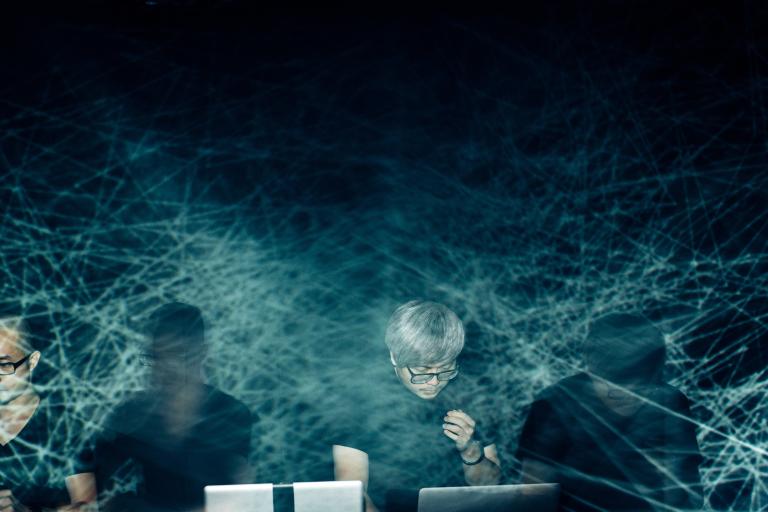Lasse Marhaug has been one of the primary forces and most prolific figures in the Norwegian noise scene since the early 1990s. Contributing to more than 300 releases and touring extensively throughout Europe, North America, and Asia, Marhaug's collaborators have included Merzbow, Sunn O))), Carlos Giffoni, Maja Ratkje, Anla Courtis, Marc Broude, Ronnie Sundin, Nordvargr, Kommissar Hjuler und Frau, The Skull Defekts, and John Wiese. Marhaug is known for his work in noise, but he also ventures into improvisation, jazz, rock, and extreme metal. He has contributed music to theatre, film, video, and installation art. Since 2011, Marhaug has published his fanzine Personal Best in which he interviews many of his favorite musicians. He also runs the record labels TWR Tapes, Pica Disk, and Prisma Records, together with Lars Mørch Finborud. In an extended series of emails, Beijing musician and writer Yan Jun probed Marghaug on a range of different topics, from his views on music and touring to his passion for tea. The interview is available to be read in Chinese here.
Yan Jun: The trigger for this interview is your magazine Personal Best. You told me that you want to keep this magazine in a physical format only. This leads me to wonder about some physical aspects of you and your activities. So…
Can I ask, how much do you weigh? Does it change during a tour?
Lasse Marhaug: My own weight is usually around 95 kilograms, so I’m quite big. I’ve had this weight since my early 20s. Even in the periods when I’ve worked out, I’ve had the same weight. I trained for a marathon, and even then, my body remained basically this same weight. And my diet is mostly pescatarian — I eat healthily. When I tour, I usually put on a few kilos. If I ever wanted to lose weight seriously, I would have to train full-time, which I don’t want to. I’ll never be skinny. That’s OK. It’s good to be big — I never had anybody try to beat me up. I probably look more like someone who likes to fight, but I’m a peace-and-love kind of guy.
YJ: How much weight of instruments do you normally carry?
LM: I travel with a maximum of 20 kgs. I really hate to drag a lot of stuff around. Not because I can't lift a bag, but it’s just a hassle to travel with lots of things. It slows you down. I like easy and flexible.
YJ: Can you help me to weigh the weight of all your releases (CDs, vinyl, cassettes, books… one copy each)? Or can you guess if it’s difficult to weigh?
LM: It’s difficult to guess. I have been involved in around 200-300 record releases. If you count record covers I’ve designed for other people or stuff I’ve mixed or mastered, that’s at least another 200. And then there are many books and fanzines. I don’t know the weight. But already, the archive of stuff I’ve been involved in takes up a lot of space in my apartment.
YJ: How much weight do you post of your own and your labels' releases each month?
LM: I send around 10-15 kilos every month. When a new Personal Best comes out, I send around 60 kg of that. In one year, I probably send out around 250-300 kgs.
YJ: One night during the All Ears festival in January 2016, while I held a bottle of Nøgne Ø, I saw you give thumbs up. Which type of Nøgne Ø is your favorite? What else (alcohol drinks) in Norway would you recommend? Have you been drunk during a concert, your own or others? How was that if you did? Or how is it if you never have?
LM: I never drink alcohol. I never started. Not even one beer. I don’t know what it’s like to be drunk. The same goes for drugs. Never been high or stoned either. I was a stubborn punk when I was a teenager, only interested in music and art, and drink and drugs were something that grown-ups did, and I didn’t want that. I wanted all my money for things related to my music — like postage, blank tapes, and printing fanzines. I found the music mind-expanding enough. So it stuck; I never started to drink. I didn’t need alcohol to boost my self-esteem or to belong, which is why many teenagers start to drink. But I’m not anti-alcohol. People should have a good time and enjoy themselves. I know that Nøgne Ø is a good beer.
YJ: Chee Wai said your favorite tea is Tie Luo Han. Is it true? How do you brew it? What size of pot or gaiwan, how many grams of tea leaves, how’s the temperature of the water, water comes out fast or slow? I assume you make it heavier, smoky, and round taste? Or do you drink it more raw Pu’er? Do you travel with your own tea and pot (or bottle) as John (Herge) does?
LM: Yes, I love Chinese tea. Especially Pu’er and high-fermented Oolong. I like both the smoky and round taste, but also raw Pu’er. This is a big passion of mine. I spend a lot of time obsessing over tea; about water temperature, about what pots or gaiwan to use, different types of tea — all this. I don’t travel with my tea stuff; it’s mostly for when I’m at home. When I’m out, I usually have a coffee; it’s easier to find a good cup of coffee, and tea demands more time to be properly enjoyed.
YJ: Where is your favorite restaurant-near-by-venue around the world? Who are the best organizers of bringing musicians (to) good food around the world?
LM: I’ve had incredible food in all parts of the world, but probably the best has been in Singapore, Japan, Korea, Mexico, and Argentina. Many organizers understand how important food is for a traveling artist. It’s common that noise musicians also are foodies. We are as adventurous in our taste buds as our ears.
YJ: When and how was the last time you cried from an artistic experience?
LM: Probably never. I’m not much of a crier. I wish I could cry for art.
YJ: Do you visit museums/art spaces or ancient sight spots when you travel?
LM: Yes, I want to see the world and learn things. Why travel long distances if you only get to see the venue that you play in. There is more to life than restaurants and bars. If I’m in a new city, I like to get there early in the morning and explore by myself before moving on.
YJ: What was your last visit to a museum or art space? If it's a friend's show, then what was the last one you went to without an invitation?
LM: The last thing I saw was a one-night sound and light installation by Alexander Rishaug and HC Gilje. I really enjoyed it, except that there were too many people talking; I would’ve liked to have seen it by myself with fewer people in the room. Alexander and HC are talented artists; good to see them working together.
YJ: What music have you enjoyed during tea time recently?
LM: Lately, a lot of John Coltrane. I’ve been on a Coltrane trip the last few months. Especially his final years, when he got more spiritual and avant-garde. I also listen a lot to Andrew Chalk — the pace of his music fits drinking tea well.
YJ: What was the biggest book you have read?
LM: I have a two-volume Complete Far Side by Gary Larson that’s five kg each book. It’s funny as hell, but also the heaviest book in my house.
YJ: Who are your most intensive writers?
LM: My taste in literature is all over the place. I usually read books just by recommendation from other people. I don’t obsess about writers as I do with film directors, painters, or musicians. Recently I read Franco Berardi, just because someone told me to.
YJ: What is the ratio of films you reviewed that you watched at home compared to at the cinema or on the large screen?
LM: Now I have a daughter, I don’t get to see so much in the cinema, so it’s mostly at home. I try to watch one movie every day.
YJ: What were your favorite films in 2015?
LM: My favorite film of 2015 was probably The Lobster by Yorgos Lanthimos. I like his work a lot, and he managed to transition to English language films with famous actors without selling out or scaling down his vision.
YJ: What are your favorite zines?
LM: My all-time favorite zine is Bananafish. It’s the bible of noise music. People ask me what books to read about noise, but I tell them to read every issue of Bananafish. It tells you everything you need to know about the noise music culture.
YJ: Have you been denied a visa or refused entry at customs? Or double-checked by airport security?
LM: No, I never had a problem anywhere.
YJ: What brand of suitcase are you using now?
LM: I travel with a Pelicase now. I need something solid with wheels and plastic. I have a Rimowa but never really liked it; I felt like things got too beat up inside it.
YJ: How many suitcases have you used?
LM: For touring? Probably four-five different ones.
YJ: Do you have a golden card of any air alliance?
LM: The best I got was a silver card at Star Alliance, but now that’s lost because I didn’t fly much the last two years. That’s OK because flying is bad for the environment. I’ve done enough damage.
YJ: Do you do hardcore tours (such as Anla Courtis does) nowadays?
LM: No, I have stopped doing that, and I will never do it again. It’s great when you are younger, but now I’m 40, it’s too tiresome. I have a family, and I would rather be more with them. I don’t need to play 100 shows a year anymore. If I can do ten, it’s enough. I have an urge to work with music, but it doesn’t have to be performing live. Studio work can be just as satisfying.
YJ: What instruments have you been building recently? Or patches?
LM: I’m not a handyman in terms of building instruments or programming; I get other people to do it. Recently I had Christian Blandhoel build me four-string and percussive instruments for a dance performance I’m composing music too.
YJ: What are the instruments (hard or soft) you've used for the longest time?
LM: SuperCollider and some of my pedals. I’m not a gearhead, so I can’t really remember what pedals they are, and my SuperCollider patches have to be re-programmed every once in a while, so it’s not really the same.
YJ: What is your favorite brand of speakers? Both studio and PA... and amp, of course.
LM: At home, I have Intelligent Sound in my home office, which are Swedish speakers, and in my living room, I have Actimate, which is an Australian brand. I like open-and-warm-sounding speakers. I work on a set of nice Tannoy monitors in my studio, which sounds precise and clear. I like different sounds at home to in the studio. For the PA, I don’t have a strong preference; most of them do the job; it’s more a matter of room acoustics. For the backline, I prefer solid-state to tube — electronics are different than guitar.
YJ: How many speakers have you blown up?
LM: You mean live, in concert? Not that many, actually, but I have blown up quite a few monitors. I consider this the sound technician's fault, as they should put a low-cut filter on the monitors because I do low-end feedback, and it can blow the monitors if you send the same low frequencies to them as to the main PA. I always tell the sound technicians to do this, but sometimes they don’t understand why, and then it starts to smell of burning during the performance.
YJ: Do you have those popular physical problems that touring musicians (especially those who make electronic music) always have: pain in the back, neck, and shoulder..?
LM: I used to have problems with my back from sitting on airplanes, but it got better when I started training the muscles in my back.
YJ: Have you hurt yourself during performances? Or your audience?
LM: Yes, I have hurt myself, but never an audience member. I have some scars and one time I had to go to the doctor. I have a scar from that performance. I’m not so interested in physical performance, mostly I just want to focus on the sound, but some projects, especially in my early days, were quite physical. But even when I sit at my table, I still get so into it that I sometimes hurt myself.
YJ: Many noise musicians report that they have made audiences physically react to the sound, such as feeling numb or painful, orgasm, etc. Has that been the case for you?
LM: Yes, I have had many reactions like this. I want the music to be intense, not just in volume but also on the musical level. I want the audience to experience something. Since I don’t dictate what those feelings should be, each audience member will have a different experience, and I like this aspect of the music a lot. It’s like a mirror — the music will reflect and amplify the feelings of the spectators. One time a couple came and told me they would go home and make babies after my concerts. That’s still my favorite compliment.
YJ: Is there any music that hurts you?
LM: The hurt I get from music is volume. I can’t take extremely loud volume for too long. Especially guitar tone feedback hurts me. I try to be careful with my ears. I’m more sensitive now than when I was younger. I love the noise but cannot take it at 130 decibels anymore, haha. So I try to make the music intense in its content and depth, not just the volume.
YJ: Once, one of my friends said after he stayed in the mountains with tea farmers for three months, he stopped to nitpick about tea and started to enjoy any tea he had. After staying with music and musicians for such a long time (25 years?), how do you judge your kind of music?
LM: Your friend’s tea story is interesting. I still love this music after working on it for 25 years. Hopefully, I will have another 25 years of it. The music still fascinates me, and I still find a lot of ideas to explore, new possibilities that open up and reveal themselves. I try to think of the music that I hear as having value, even if it’s not totally to my taste. I appreciate the intent of the artists, and that’s enough. What I listen to at home may be something else, but it’s important to appreciate the full scope of what is done within our field of music. For me, noise music represents a way of thinking that is positive. It has a social and political aspect outside of just the musical content. I’ve also realized that the friends I’ve met through this music are my extended family, which is important to me. For me, it was the best choice I made in my life to get involved with this music. I’m fortunate as to where it has taken me.
YJ: Francisco Lopez donated his CD collection (mostly from musicians he met) to establish an archive. Alvin Lucier donated his collection to Wesleyan University when he retired. Frans de Waard sells review copies to maintain his Vital Weekly. Do you and will you keep all these CDs, vinyl, cassettes, and books forever?
LM: No, I trim my collection from time to time. I keep around half of what I accumulate, maybe less. I keep the stuff that I will return to, so it’s more like having a library for my future self than nostalgia for what I used to be into. But I do try to collect all Norwegian experimental music, especially the underground releases and old stuff.
YJ: How much early Norwegian electronic music have you collected? How is the selling of your reissues of this music?
LM: There wasn’t really that much early electronic music from Norway released. It was largely undocumented in the 60s and 70s, except for Arne Nordheim. Most of the stuff I helped put out on Prisma Records was previously unreleased. I’m happy to have helped make this music available.
YJ: How is the selling of those releases?
LM: Yes, those releases sold quite well. It seems people are curious about music from the past. That’s been the case the last 10-15 years when so much of the past 50-60 years of music has been reissued, reassessed, and revalued. This is largely positive; for me, about half of the music I buy is older music. I'm curious about how things are connected, what movements lead to other movements. It might be that people buy that stuff less now, as there has almost been an overload of releases; it seems every week some forgotten music is brought out from obscurity. It’s hard to keep up with everything that comes out.
YJ: According to the physical aspect of art and music, are you familiar with the new materialism of sound theory?
LM: No, I don’t know about it. I try to avoid sound theories.
YJ: Somehow, paintings are similar to speakers that are always transmitting energy to audiences…
LM: That seems like a very vague metaphor. Speakers don’t transmit energy — they transmit soundwaves, and not always even that. Music transmits energy. Ditto paintings - paint on a canvas does not equal energy. I need to see and hear ideas; paint and sound are not enough in themselves.
YJ: But how about conceptual art?
LM: It often leaves me cold. Most conceptual art is based on old and tired concepts or made to cater to a market. I want to see something that makes me wonder and curious, not something that makes me feel clever because I can decipher its codes. It’s good not to understand. I like some of the conceptual art of the 60s and 70s, but most of the stuff done now is terrible. The main problem is that so many artists want to make a living off their artworks, so they remain in a safe zone, afraid to make any real statements. This is at least the situation here in the West; probably, there are more brave artists in China and the east doing political work.
YJ: And conceptual music, if there is this kind of music?
LM: Music is an experience. I’m not interested in silly concepts about music. It’s very rarely that conceptual music touches me — it has to touch me on a musical level.
YJ: Have you made any musician or artist enemies?
LM: Not that I know of. I try to treat everyone with respect and be nice. I’m sure that plenty of people dislike me, but then they dislike me for what I represent and the work I do, not because I treated them badly, and that’s totally OK. Who wants to be liked by everybody? It’s impossible, and those who try to end up lying and cheating.
YJ: Have you joined any political activities? Physical actions like demonstrations in the street?
LM: No, I haven’t been part of any demonstrations. I feel bad about that; I should have done that. But I have helped out with some political matters, like designing logos and shirts for causes that I agree with. I admire people who get involved in politics.
YJ: Have you had any politicians in your audience?
LM: Yes, Dror Feiler. He is a brilliant politician and activist. Great guy.
YJ: In what cases/situations have you hesitated or taken time to think before acting?
LM: Quite often. Most of my solo pieces take a long time to realize. I spend time thinking about them, sometimes many months, before I sit down to record and work. It’s just that I do several projects at the same time, so it appears that I’m quick. In my mind, I’m slow. I should do more and be more focused. I try to get better.
YJ: How do you go on composing?
LM: In my head mostly. I think of specific ideas, moods, or directions I want to work with and let the ideas develop in my mind. The actual recording is often done quite fast, but I often spend a long time in the mixing stage; I feel that’s where the real composing happens. So first, the idea forms in my head, then the recording session, and then reevaluating the idea, finding out if it holds water or if it leads to something else, and then not being afraid of being led to where the idea takes me. I’m a slave to my sounds — I must follow them to wherever they take me. If I listen well, they will treat me well.
YJ: What is the lightest music you have done? And the sweetest?
LM: All my music is light and sweet. Noise music is candy for the ears.
YJ: Do you care about perfection in your work?
LM: I’m something of a perfectionist. I spend time labouring over details, but I don’t believe that art can truly ever be perfect. An artist who believes his work is perfect is a fool. When I read the words of artists that I consider to be absolute geniuses — like Francis Bacon or Werner Herzog — I often find them extremely critical of their work. They don’t believe that what they’ve done is anything but temporary.
YJ: Do you care about the length of performance that organizers or audiences expect from you? How long do you normally play if there is no limit?
LM: This is one place where my work pleases people — my ideal performance length is one that organizers and audiences seem equally happy with: somewhere between 20 and 40 minutes. For me, that’s the perfect length for my music. I’ve tried playing longer — once I played with Stephen O’Malley and Massimo Pupillo for two-plus hours, and it was fun — but I still prefer the half-hour set.
YJ: Once, I saw Keiji Haino check his watch several times during a concert. That reminded me of how strict the contracts of big festivals are...
LM: Well, I’ve seen Haino-san drive a whole stage crew absolutely nuts because he went way overtime at a gig. In the end, they went on stage and yelled to him while he was still playing, and then they cut the sound on the PA. It was in Paris, and I was on the side of the stage. I filmed it all; if you search, you can find it on my Vimeo. The link is:https://vimeo.com/31878907
YJ: Would you cancel a performance if someone blew up all the speakers before you?
LM: If I knew it, I probably would, but when I played in Washington, DC in 2012, it was the case of the tops being blown — and that was the one gig when we didn’t have time for a soundcheck. We arrived late, and it was one of those nights when there are six to seven acts on the bill, so no time to soundcheck. Most of the acts before me sounded a bit weird, but they were also playing guitar amps in addition to the PA, so I plugged in and started playing, only to discover that it was basically just the subs working. It sounded awful, and I changed my set into low-end feedback.
YJ: Or you'd like to change it to acoustic if it's a small venue?
LM: I still have not played an acoustic performance. I thought about it, and I could do it, but I would need an ensemble of musicians to help me make it work. I’m working on that idea.
YJ: Can you recommend some field recording works?
LM: This is not my favorite genre. It often feels like I’m just listening to the filter of the microphone. There are so many boring location recording works released. I quite like Chris Watson’s works; he’s really interesting, and especially his works that are just pure documentation. But, one of my all-time favorite records of any genre is a location-recording album called Sounds of North American Frogs by Charles M. Bogert. It’s a Folkways LP from 1958, and it’s one of the records I’ve heard the most times in my life. One of the best albums ever put out. It would make my top 20 list. Everybody must hear it.
YJ: How much of a city person are you? What does nature mean for you?
LM: I grew up in the exact opposite of a city, on an island in the rural countryside of Northern Norway, with almost no people around. You can check the location on Google-maps:https://goo.gl/maps/8XzUzLiAe8K2
It is kind of a nature paradise — beautiful mountains, big sea, forest, and fresh air. But I became bored of this environment as I grew up. I was interested in movies, music, and books more than going fishing, hiking, or skiing. So now I love big cities. I like the energy of large groups of people.
YJ: Do you care if people upload, then let the apps stream your music as 56kbps mono mp3? Maybe that makes more audiences for you (for instance, in China)?
LM: Overall, I see online sharing of music as a positive. This kind of non-profit sharing has helped me quite a lot — it has made my music heard by people all over the world. I understand that people cannot afford to buy records in some countries, and that’s OK; I want my work heard. I’m not so happy when the sound quality is reduced; I want people to hear my work with good sound, but what can you do? That’s the way it goes. On the other hand, I really despise the commercial record industry version of this — I have several albums on Spotify and iTunes that I never agreed to put there — but they do it within a so-called legal way, and they are claiming money for it — so where does that money go? This pisses me off that big corporations steal from artists. Non-profit sharing, I support, but the big business hijacking of artists’ work I deplore.
YJ: Since my first batch of questions (April 26) till now (May 12), what have you done (creatively, artistically, publicly...)?
LM: Oh shit, if I were to list that, I would feel like a maniac. Probably the most exciting thing is that I recorded with a sax player called Kristoffer Alberts for a duo record and rehearsed for a performance of Christian Marclay’s Screen Play film with the piano player Christian Wallumrød that’s due next week. I also mixed and mastered an LP with Christian Marclay and Okkyung Lee, although those two Marclay projects are not connected. I’ve also done a remix and worked on some other mixing and mastering jobs. And record cover designs. And done a few interviews for Personal Best. And wrote some stuff for some books and magazines. And helped put together a music video. It’s been a busy few weeks.

